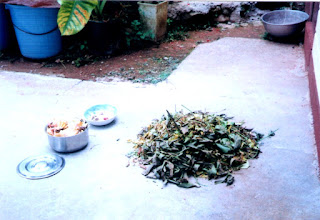We are now experiencing a very bad storm or typhoon that started since yesterday. As of 5 PM today, the strength of the storm has gone down to a maximum sustained winds 250 kph near the center and gustiness to 150 kph. The storm is heading towards the extreme northern part of the country and it is expected to out of the country by Tuesday afternoon. In fact, even the college students were sent home yesterday because of the strong storm. Unfortunately, 3 people died here in Baguio City alone when a retaining wall at the Irisan Dump site caved in and buried them alive. Some other 3 people are also dead in different parts of the country and some are still missing. Since our city is located high up in the mountains, we are prone to landslide and sometimes flooding in some low lying areas. In one section of the road that comes to our village, it was washed out so no cars can come in. All cars coming in to the village has to stop and turn around at the top of the street so all the villagers will have to walk at some distance to catch the jeepney or a taxi just to go to the city proper. At Burnham Park Lake which is one of the landmarks in the city, it's also flooded.
Now to my poor rain soaked garden. Unfortunately, the wind was so strong that my poor garden was flattened out and the new vegetable seedlings that I planted a few days earlier were all washed out. There is one plot in the garden where I took some top soil to use as a top dress for the potatoes and that section got flooded. I will have to start all over again. I may not be able to do this until after the rainy season is over which should be around the middle of November. The cucumbers that were climbing on the fence in the garden were all blown away, they were bearing some fruits too. We have a lot of cleaning up to do because a lot of debris are strewn all over the place including some ornamental trees that were uprooted and plenty of bushes that serves as a fencing material around our property were all broken down. In spite of everything, we thank God that we are all safe and sound. I will take up gardening again when the weather permits.













